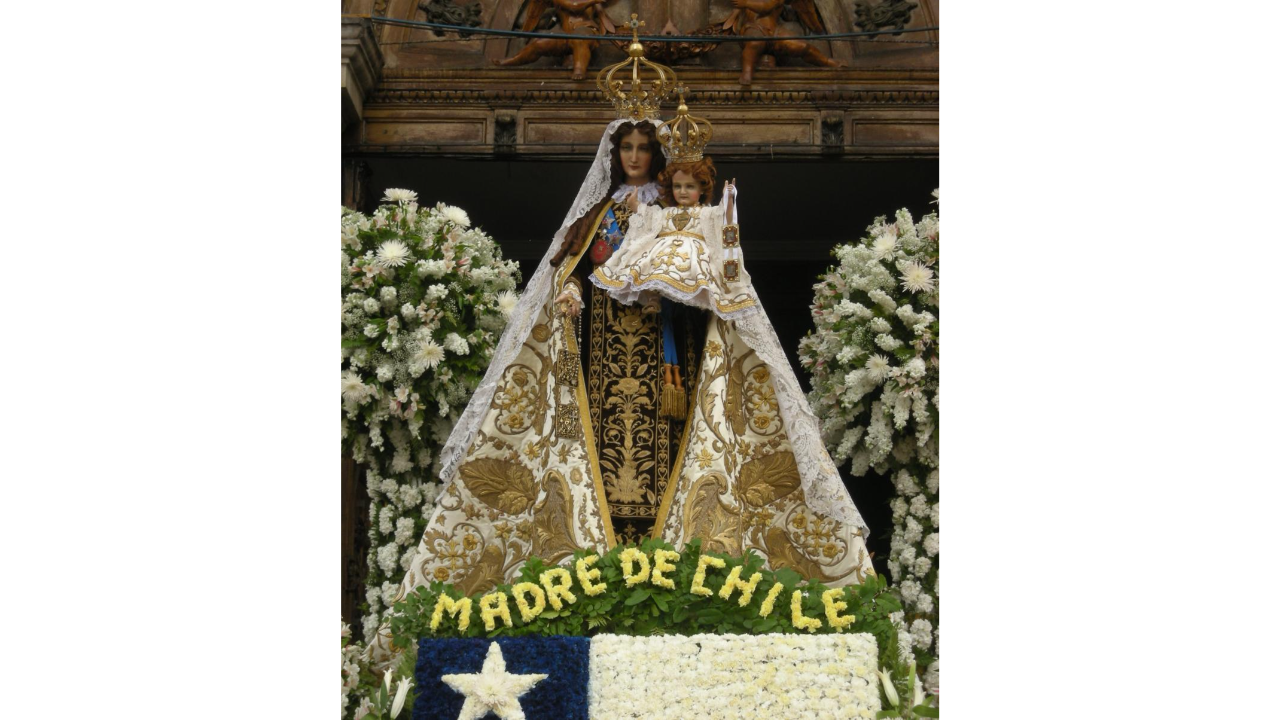The figure of Our Lady of Mount Carmel, Patroness of Chile, is deeply rooted in Chilean history, spirituality, and national identity. Mary, in addition to being a symbol of unity in faith, is the Mother who constantly accompanies her Chilean children, both in moments of joy and in times of hardship and effort, showing a maternal and protective presence that spans generations. Chile is a country where love for Mary holds great strength, inspiring religious and cultural expressions throughout the land. This love for the Virgin of Mount Carmel is a key element of national identity and leads many Chileans to turn to Mary in prayer during difficult times, seeing her as a “companion on the journey” throughout the country’s history.
History and Carmelite Roots
The arrival of devotion to the Virgin of Mount Carmel in Chile dates back to the early colonial period, having been brought by missionaries and gradually incorporated into popular spirituality. The symbol of the scapular, according totradition, a gift from the Virgin to Saint Simon Stock in 1251, is central: it represents protection and commitment, a spiritual garment widely embraced by Chilean believers. In Chile, the Discalced Carmelite Sisters arrived from Chuquisaca [Bolivia] in 1689, settling in Santiago the following year. They brought not only the image of the Virgin but also the rich spiritual heritage of Saint Teresa of Jesus and Saint John of the Cross. The Discalced Carmelite Friars arrived later, in 1899, making Chile the first South American country to receive the male branch of the Order. The Virgin of Mount Carmel gained special prominence during Chile’s struggle for independence. After the defeat at Rancagua, the patriots fled to Mendoza, where Bernardo O’Higgins and José de San Martín designated the Virgin of Mount Carmel as Patroness of the Army of the Andes. After the victory at the Battle of
Maipú in 1818, they vowed to build a sanctuary in her honor, a promise fulfilled with the construction of the Votive Temple of Maipú, which today stands as a national center of pilgrimage and devotion.
Current Devotion and Celebrations
The main feast takes place on July 16, a day when thousands of Chileans gather in processions, Masses, and cultural expressions that reflect gratitude and faith. The Chilean people show this devotion not only in the capital, but also in regional festivals such as La Tirana and Andacollo, where the image of the Virgin blends with local culture and traditions. This maternal presence has historical precedents in figures like Arturo Prat, who wore the scapular during crucial moments, reaffirming the Virgin’s presence in the national memory. From north to south in Chile, hermitages and sanctuaries dedicated to the Virgin of
Mount Carmel symbolize Mary’s constant presence in daily life, expressing a devotion that is revealed through acts of solidarity, joy, and comfort in the face of the country’s challenges. All of this unfolds under the guidance, protection, and communion that the Mother of the Lord, and our Mother, offers to the entire Chilean people.
The Deeper Meaning: Mary in Chilean Life
Beyond history and celebrations, the Virgin of Mount Carmel represents, for Chileans, the maternal face of the Mother of God who draws us closer to Jesus. She is a spiritual refuge and an invitation to hope and inner transformation. Her presence unites both believers and non-believers around values of communion,
resilience, and faith, confirming her as the Principal Patroness, Mother, and Protector of Chile.











